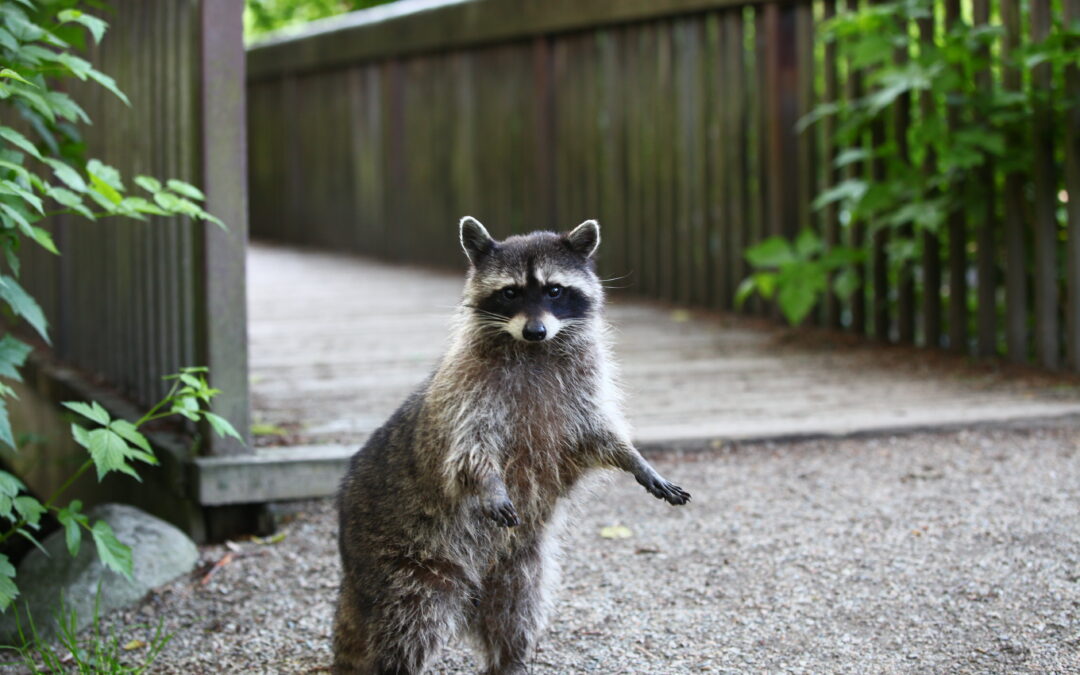A racoon has for the first time been caught on camera in Warsaw. The discovery of the alien species has prompted fears for local wildlife, and even that the animal could become an urban pest, as it has in Germany.
The video footage, recorded by a camera trap in the Bielański Forest, eight kilometres north of Warsaw city centre, follows the discovery of racoon tracks in nearby Modlin three years ago, as well as sightings reported by locals.
Racoons, which originally come from North America (where they are spelt “raccoon”) are not native to Poland. However, their population in central Europe has grown in recent decades, due to deliberate introductions and escapes.
In a video released by City Forests, the municipal body that oversees Warsaw’s woodlands, a racoon is shown walking at night along the Rudawka River, which runs through Bielański Forest. The nature reserve is home to several rare species.
“This is the first tangible evidence [of racoons],” Andżelika Gackowska, deputy director of City Forests, told Gazeta Wyborcza. “Earlier, we [only] had reports from locals.”
“On the one hand, it is interesting and a big surprise that this animal has reached Warsaw,” wrote City Forests alongside their video. “But on the other, it is not good from a natural point of view. The racoon is an alien species…[and] poses a threat to native animals [as] another predator.”
Three years ago, a professor of biology at Warsaw’s Cardinal Stefan Wyszyński University, Jerzy Romanowski, documented racoon tracks by the Vistula River near Modlin, 30 kilometres from Bielański Forest.
“I found the footprint in soft ground, next to those of foxes,” he told Gazeta Wyborcza. “It is difficult to confuse them with something else, because they resemble the imprint of a small human hand. No animal in the Polish natural world leaves such tracks.”
Racoons could have spread to Poland from Germany, where a small number were released or escaped during the 1930s and 1940s (including when a bomb hit a fur farm during World War Two) and then began to breed in the wild. They now number an estimated one million.
In recent years, racoons have begun to “wreak havoc in German cities”, reports Deutsche Welle. “Germany overrun by hordes of masked omnivores,” headlined Der Spiegel.
Gackowska told Gazeta Wyborcza that, if racoons begin to breed around Warsaw, they may pose a similar threat. “If there is one racoon in the forest, that’s still a small problem. But if he finds a partner, we will have a very big problem.”
Racoons can harm local wildlife, including feeding on bird chicks. They can also carry rabies, echinococcosis and the roundworm Baylisascaris procyonis.
When racoons move into urban environments, as in the United States, they can learn how to break into homes and steal food, as well as plunder rubbish bins.
City Forests advises anyone who spots a racoon to avoid feeding or touching it. Instead, they should report sightings to the police, who will try to catch the animal.
One animal that has already become a growing nuisance in cities is the wild boar, which has been drawn to urban areas by the availability of food waste, milder climates and general safety, as well as quieter streets during the pandemic.
In Poznań, despite municipal authorities removing over 550 boars annually, around 200-250 are still estimated to live there. Under African swine fever (ASF) regulations, following an outbreak last year, the maximum number is supposed to be 20.
A policeman was required to intervene after a wild boar entered a backyard where children were playing and ate their pierogi.
The police reassure that the offender is well known to them and is not aggressive, having become used to being fed by humans https://t.co/yShFzj84fV
— Notes from Poland 🇵🇱 (@notesfrompoland) June 5, 2020
A more welcome development has been a successful programme to reintroduce the peregrine falcon. The birds once suffered man-made extinction in Poland, but one pair is now nesting on top of the country’s tallest building, Warsaw’s Palace of Culture and Science.
Last year, the first bear was sighted in Poland’s primeval Białowieża Forest since the animal was hunted to extinction there in the first half of the 20th century. Wolves, which had also been culled to near extinction, have also been making a comeback near Warsaw.
Main image credit: GoToVan/Flickr (under CC BY 2.0)

Juliette Bretan is a freelance journalist covering Polish and Eastern European current affairs and culture. Her work has featured on the BBC World Service, and in CityMetric, The Independent, Ozy, New Eastern Europe and Culture.pl.




















